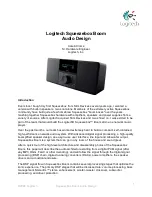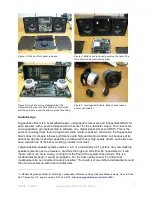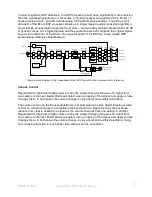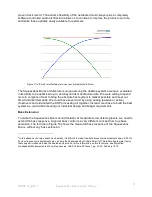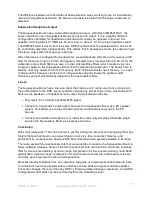
©2008 Logitech
Squeezebox Boom Audio Design
8
proven track record. The extreme flexibility of the networked music player plus a completely
software controlled audio architecture allows us to continue to improve the product over time
and make these updates easily available to customers.
Figure 10: 4th order woofer/tweeter crossover implemented in Boom.
The Squeezebox Boom architecture is unique among the desktop systems we have evaluated
in its ability to be optimized up to, and beyond its manufacture date. We were willing to spend
more in component cost to bring the absolute best system to market possible and meet our
time-to-market demands. We could have saved cost by using analog (passive or active)
crossovers and eliminated the DSP processing all together; instead, we chose to build the best
system we could while meeting our industrial design and budget requirements.
Bass Extension
To make the Squeezebox Boom sound fantastic at moderate to low listening levels, we need to
extend the bass response. A typical bass control is a very different concept from true bass
extension. The red line in Figure 10 shows the measured bass response of the Squeezebox
Boom, without any bass extension.
3
3
In the absence of a large anechoic chamber, it is difficult to make free-field acoustic measurements down to 20 Hz.
For low-frequency measurements we use a method developed by Richard Small (of Thiele-Small parameter fame)
that uses a microphone inside the sealed enclosure. For more information on this technique, see Simplified
Loudspeaker Measurements at Low Frequencies, JAES Volume 20 Issue 1 pp. 23-33; February 1972.

